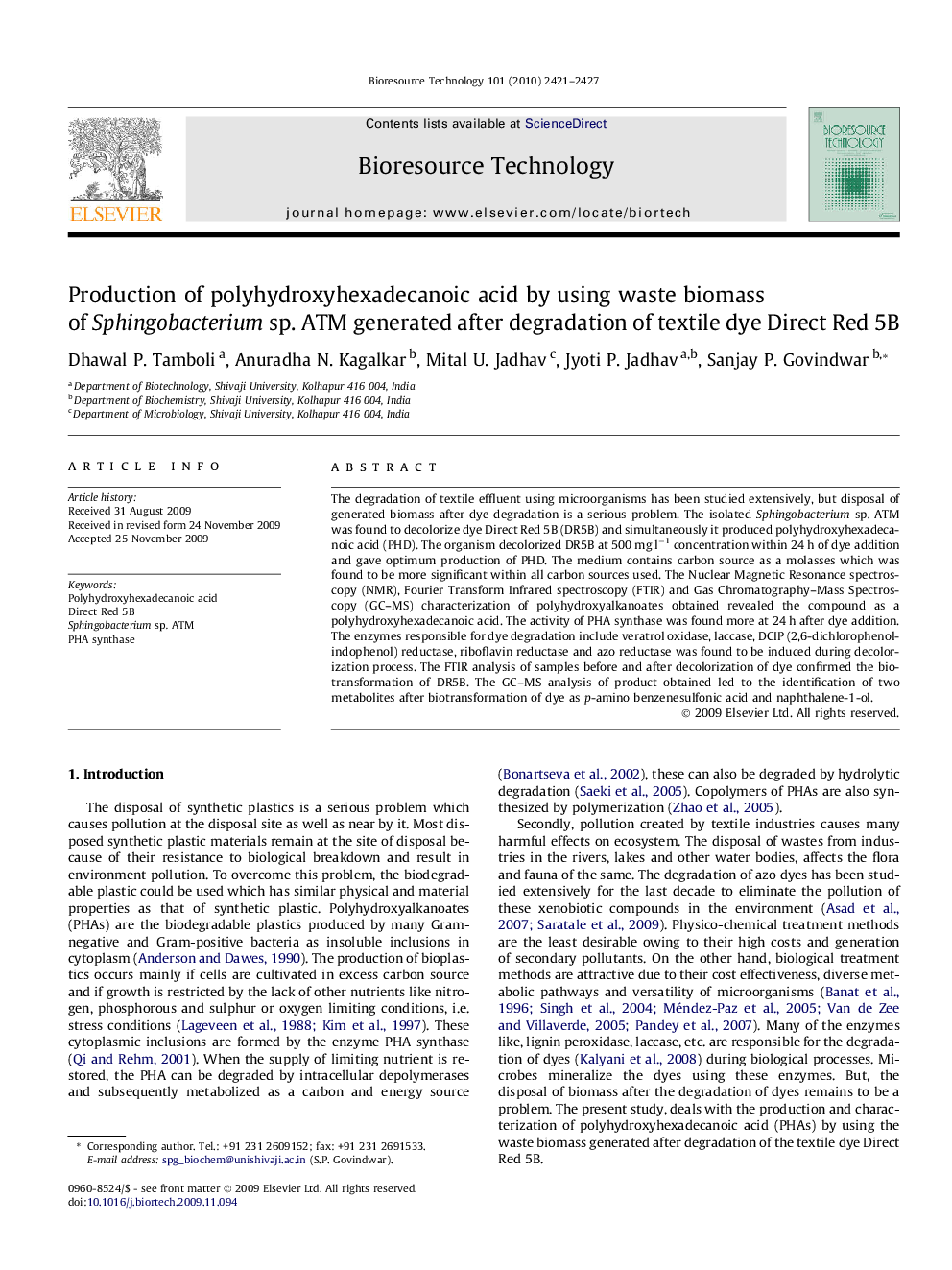| Article ID | Journal | Published Year | Pages | File Type |
|---|---|---|---|---|
| 683876 | Bioresource Technology | 2010 | 7 Pages |
The degradation of textile effluent using microorganisms has been studied extensively, but disposal of generated biomass after dye degradation is a serious problem. The isolated Sphingobacterium sp. ATM was found to decolorize dye Direct Red 5B (DR5B) and simultaneously it produced polyhydroxyhexadecanoic acid (PHD). The organism decolorized DR5B at 500 mg l−1 concentration within 24 h of dye addition and gave optimum production of PHD. The medium contains carbon source as a molasses which was found to be more significant within all carbon sources used. The Nuclear Magnetic Resonance spectroscopy (NMR), Fourier Transform Infrared spectroscopy (FTIR) and Gas Chromatography–Mass Spectroscopy (GC–MS) characterization of polyhydroxyalkanoates obtained revealed the compound as a polyhydroxyhexadecanoic acid. The activity of PHA synthase was found more at 24 h after dye addition. The enzymes responsible for dye degradation include veratrol oxidase, laccase, DCIP (2,6-dichlorophenol-indophenol) reductase, riboflavin reductase and azo reductase was found to be induced during decolorization process. The FTIR analysis of samples before and after decolorization of dye confirmed the biotransformation of DR5B. The GC–MS analysis of product obtained led to the identification of two metabolites after biotransformation of dye as p-amino benzenesulfonic acid and naphthalene-1-ol.
